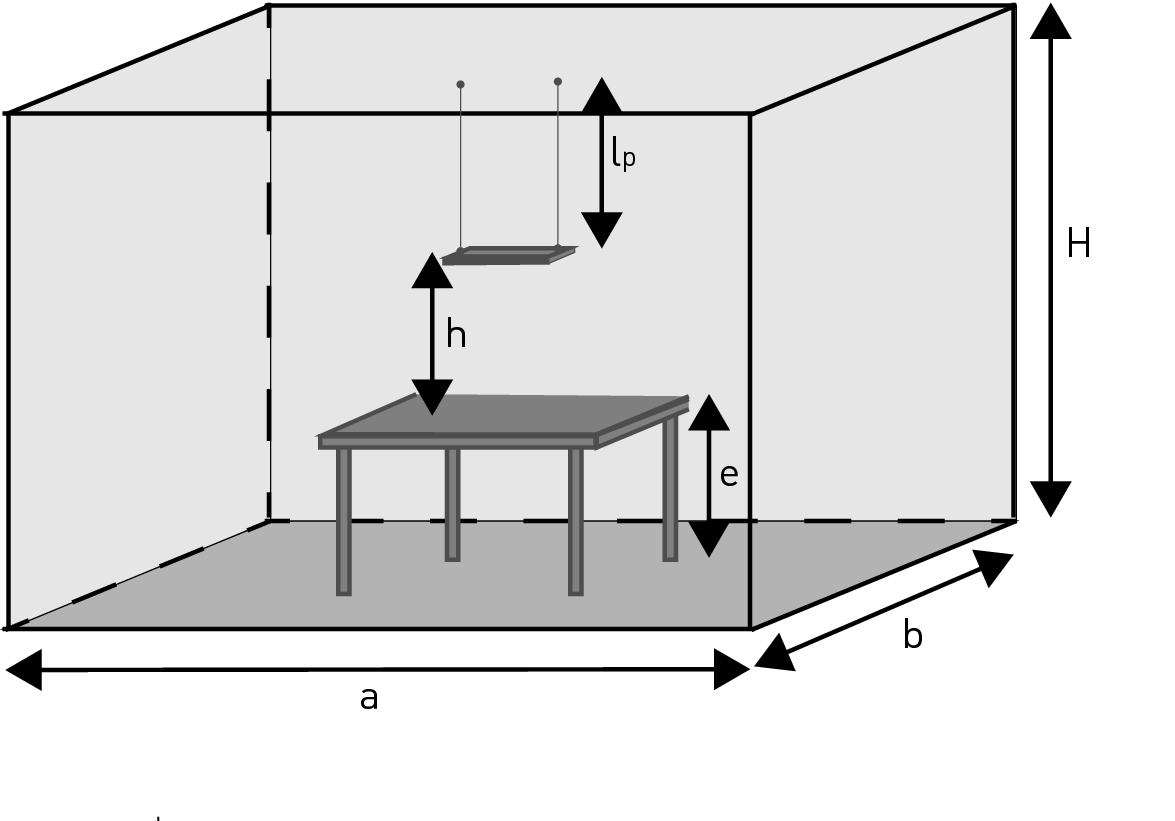The shape and design of a room, through reflectivity of walls, floor, ceiling and furniture, has a decisive influence on the dispersion of light and thus the lighting’s efficiency. This means that luminaires should be selected according to their efficiency in applications.
Direct-distribution luminaires are preferred in industry, trade and handcraft applications, where ceiling and walls feature mostly poor
reflectivity, and are assigned to working areas according to EN 12464-1 [48].

